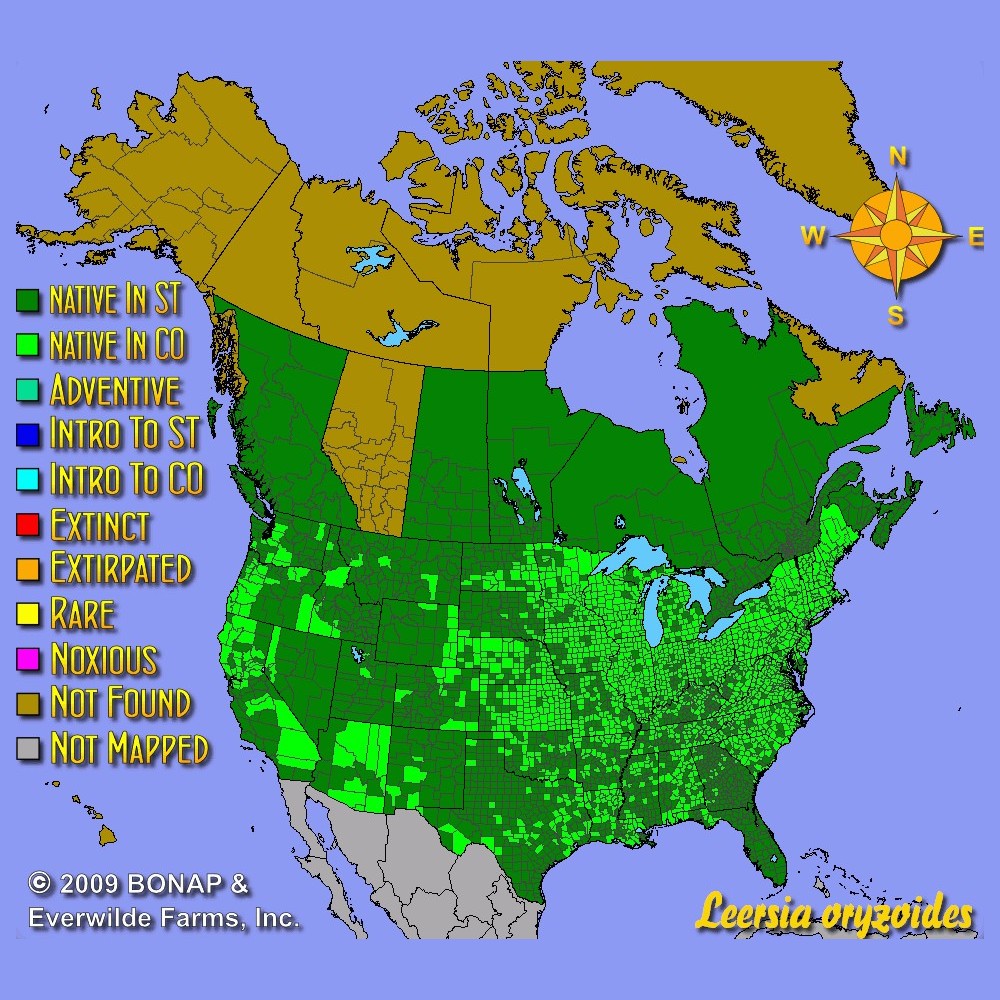Rice Cut Grass Seeds
Leersia oryzoides
- HOW TO GROW
- FAST FACTS
HOW TO GROW
Sowing: Direct sow either in late fall or early spring. Press the rice cut grass seed into the surface of the soil, compacting the soil very firmly. For spring planting, mix the Leersia Oryzoides seeds with moist sand and store in the refrigerator for 60 days before planting. Keep the soil lightly moist until germination.
Growing: Water seedlings regularly until they become established. This plant prefers soil that is constantly moist and saturated, even growing in standing water. It also adapts to clay and sandy soil with adequate moisture. It will eventually spread by rhizomes and self-seeding. The rice cut grass plant makes an excellent choice for erosion control or wetland restoration and provides forage and cover for birds and other wildlife. It also performs well in water gardens.
Seed Saving: At the end of the season, the seed heads will begin to ripen. Strip the mature seed from the stem and store it in a cool, dry place.
FAST FACTS
Latin Name: Leersia oryzoides
Species Origin: US Native Grass or Sedge
Type: Native Grasses, Cool Season
Life Cycle: Perennial
USDA Zones: 2, 3, 4, 5, 6, 7, 8, 9, 10
US Regions: California, Mountain, Arid/Desert, Plains/Texas, Midwest, Northern, Northeast, Southeast
Seeds per Ounce: 64,300
Stratification: No Stratification
Germination Ease: No Stratification
Sunlight: Full Sun, Part Sun
Height: 48 Inches
Color: Green, Brown
Bloom Season: Blooms Late Summer, Blooms Early Fall, Blooms Late Fall
DESCRIPTION

HOW TO GROW
Sowing: Direct sow either in late fall or early spring. Press the rice cut grass seed into the surface of the soil, compacting the soil very firmly. For spring planting, mix the Leersia Oryzoides seeds with moist sand and store in the refrigerator for 60 days before planting. Keep the soil lightly moist until germination.
Growing: Water seedlings regularly until they become established. This plant prefers soil that is constantly moist and saturated, even growing in standing water. It also adapts to clay and sandy soil with adequate moisture. It will eventually spread by rhizomes and self-seeding. The rice cut grass plant makes an excellent choice for erosion control or wetland restoration and provides forage and cover for birds and other wildlife. It also performs well in water gardens.
Seed Saving: At the end of the season, the seed heads will begin to ripen. Strip the mature seed from the stem and store it in a cool, dry place.
FAST FACTS
Latin Name: Leersia oryzoides
Species Origin: US Native Grass or Sedge
Type: Native Grasses, Cool Season
Life Cycle: Perennial
USDA Zones: 2, 3, 4, 5, 6, 7, 8, 9, 10
US Regions: California, Mountain, Arid/Desert, Plains/Texas, Midwest, Northern, Northeast, Southeast
Seeds per Ounce: 64,300
Stratification: No Stratification
Germination Ease: No Stratification
Sunlight: Full Sun, Part Sun
Height: 48 Inches
Color: Green, Brown
Bloom Season: Blooms Late Summer, Blooms Early Fall, Blooms Late Fall



